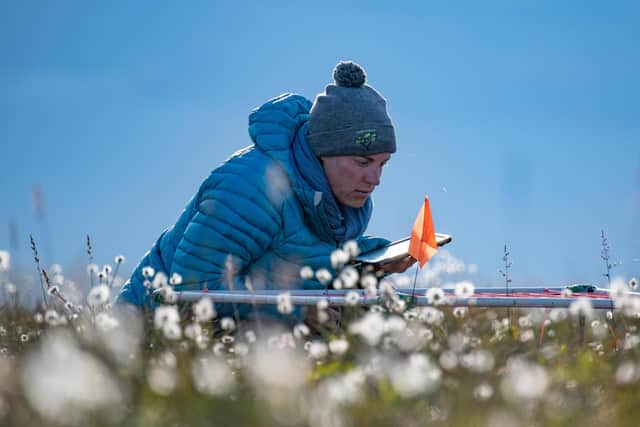Climate change: Arctic ‘greening’ is accelerating global warming in more ways than one – Professor Isla Myers-Smith
Every week, it seems, research is revealing the accelerating impacts of climate change. The Arctic is warming nearly four times as fast as global averages, with some locations, such as Svalbard, warming up to seven times faster. The region is certainly living up to its recently acquired title, “the frontline of climate change”.
The Arctic Ocean is mostly covered with a layer of sea ice. But as the planet warms, this is declining with about half of the sea-ice area lost since 1981 and predictions of a mostly ice-free Arctic summer by 2050. With less sea ice in summer, more of the ocean’s surface is exposed, turning a reflective, white surface dark and trapping the sun’s heat. The same is happening on land with longer snow-free seasons.
Advertisement
Hide AdAdvertisement
Hide AdThe Arctic is covered with snow for much of the year, but each summer the snowy landscapes turn green for a few short weeks. This is when plants and animals kick into gear to carry out their life cycles. As temperatures increase, tundra ecosystems are in sharp transition. Plants are ‘greening up’ earlier and there has been a marked increase in certain species such as shrubs, the trees of the tundra.
As the tundra responds to warming, the thin layer of green plants is becoming thicker, trapping a deeper blanket of snow, insolating frozen ground from the winter’s cold. Shrub stems extend above the snowpack in spring, darkening the surface of the tundra and again trapping more heat in the system.
Under the tundra lie vast stores of frozen carbon. It should act as a carbon sink, capturing carbon dioxide from the atmosphere in the growth of plants. Northern latitudes, covering about a fifth of the planet’s land, store up to a third of the world’s soil carbon in the permafrost.
With accelerating warming, the permafrost is starting to thaw and carbon is being released as CO2 or methane, a more potent greenhouse gas. If all of it were released, it would more than double the carbon in the atmosphere.
I’ve been studying how exactly these ecosystems are responding as the climate warms my entire career. The ‘greening of the Arctic’ is a phrase that encompasses the increasing greenness seen by satellites and the greater plant growth measured from records on the ground.


This seems like a straightforward scientific story: the Arctic warms and plants grow more. But with accelerating warming, there is now real urgency to untangle the connections between climate change and tundra ecosystems.
The satellite pixels of our decades-long satellite records are as big as football pitches or swimming pools, yet most of the change in Arctic tundra is happening at much smaller scales, giving us a misleading picture of the rates and magnitudes of change.
At the University of Edinburgh, and with our colleagues working around the Arctic, our aim is to figure out what the changes satellites see from space really mean on the ground.
Advertisement
Hide AdAdvertisement
Hide AdOne thing is clear from our research so far: rapid and accelerating warming is reshaping Arctic ecosystems, with implications for plants, wildlife, and people, in the Arctic and worldwide.
Isla Myers-Smith is a professor of climate change ecology at the University of Edinburgh, and a fellow of the Royal Society of Edinburgh. The RSE, Scotland's national academy, is on Twitter at @RoyalSocEd
Comments
Want to join the conversation? Please or to comment on this article.